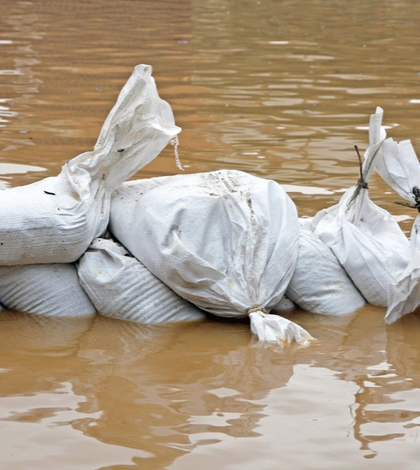With the next round of winter storms headed to California, a consortium of state and federal agencies are appealing to Californians to plan ahead and remain alert for flooding, debris flows and further erosion of vegetation and soils. The ten agencies are especially concerned about the areas in and around the burn-scarred areas across the state.
Representatives from the California Department of Water Resources, Cal FIRE, the Department of Homeland Security, the Federal Emergency Management Agency (FEMA), the California Governor’s Office of Emergency Services (Cal OES), the U.S. Army Corp of Engineers, the National Weather Service, the National Oceanic and Atmospheric Administration (NOAA), United States Geological Survey (USGS) and the California Geological Survey (CGS) are cautioning residents and businesses that rates of erosion and runoff can increase to dangerous levels following wildfires in California. Wildfires dramatically change landscape and ground conditions, which can lead to the increased risk of flooding even with light rains.
“This past fire season has been very deadly and damaging and now the public must prepare for flooding and erosion,” said Chief Ken Pimlott, director of CAL FIRE. “CAL FIRE and many other agencies have been working in burn areas during and after a wildfire to address these issues to help protect communities, but it is imperative that residents stay aware of their surroundings and heed all warnings and orders from emergency officials.”
The Thomas Fire and the subsequent rains which ravaged the central California coast in Santa Barbara county has destroyed nearly 100 homes, closed major highways f or several weeks and killed at least 20 people. Karla Nemeth, the Department of Water Resources new director acknowledged the situation saying, “Thousands of California residents have endured the horror of wildfires that destroyed their homes, and now many others are suffering from flooding over those same landscapes. We urge everyone living and working near the fire zones to carefully assess the threat of postfire flooding.”
The dynamics of the landscape will physically change due to wildfires. Whereas natural, unburned vegetation and soil normally act as a sponge during a rainfall event, the heat from a fire can bake the ground, creating a surface that will not absorb water, thereby increasing the speed with which water flows off the slope. When these normal and protective functions are compromised or eliminated by a severe wildfire the potential for significant erosion, flooding, and debris flows is magnified.
Cal OES Director Mark Ghilarducci called for vigilance in the post-fire environment: “Last year’s devastating wildfires and record-breaking storms remind us of the natural disasters California faces. I encourage all Californians to look at their risks and take steps to be prepared for the next disaster.”
Flash flooding most often occurs when rainfall reaches half an inch in an hour in a burned area. Other factors that can increase flooding and debris flows are how severe the fire was, how steep the terrain is, how much time the ground has had to heal itself and the amount of post-fire vegetation growth and recovery. Although multiple state and federal agencies worked both during and after California’s wildfires to identify and repair areas of concern before the winter rains, no method of flood, debris flow, and erosion prevention are guarantees from the destructive forces of nature.
Dianna Crilley, USGS’s Associate Director for Data, USGS California Water Science Center, advised Californians to use tools available online. “Early warnings issued by the National Weather Service based on computer models, rainfall forecasts, and USGS real-time streamflow data can help emergency managers and residents be informed and prepared for potentially dangerous post-fire conditions.”
The consortium of state and federal disaster agencies urges Californians in fire-ravaged areas and those with a possibility of flooding and debris flood to consider flood insurance by talking to a professional to find out more.
Roy Wright, Deputy Associate Administrator, Federal Insurance and Mitigation Administration, said: “FEMA urges Californians to seriously consider the purchase of flood insurance as the best financial protection against the increased threat of flooding created by the recent wildfires.”
 California Water News Daily Your Source For Water News in California
California Water News Daily Your Source For Water News in California


